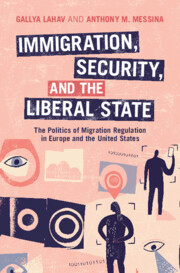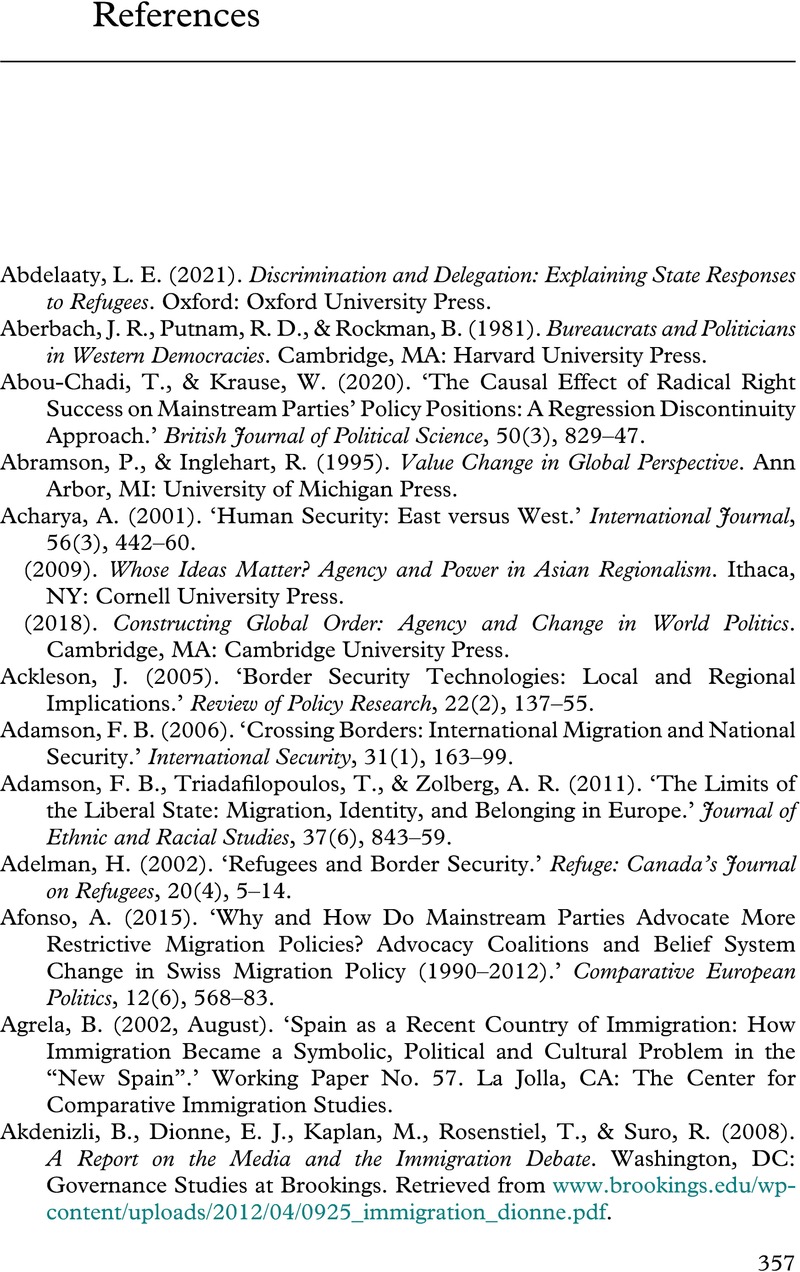 Immigration, Security, and the Liberal State
Immigration, Security, and the Liberal State Book contents
- Immigration, Security, and the Liberal State
- Immigration, Security, and the Liberal State
- Copyright page
- Epigraph
- Contents
- Figures
- Tables
- Preface and Acknowledgements
- 1 Introduction
- 2 Framing and Reframing Immigration
- 3 Expanding the Migration Policy Playing Field
- 4 Popular Attitudes towards Immigration Regulation
- 5 Immigration and the Politics of Threat
- 6 Securitizing and Politicizing Immigration
- 7 Conclusions
- References
- Index
- References
References
Published online by Cambridge University Press: 09 February 2024
- Immigration, Security, and the Liberal State
- Immigration, Security, and the Liberal State
- Copyright page
- Epigraph
- Contents
- Figures
- Tables
- Preface and Acknowledgements
- 1 Introduction
- 2 Framing and Reframing Immigration
- 3 Expanding the Migration Policy Playing Field
- 4 Popular Attitudes towards Immigration Regulation
- 5 Immigration and the Politics of Threat
- 6 Securitizing and Politicizing Immigration
- 7 Conclusions
- References
- Index
- References
Summary

- Type
- Chapter
- Information
- Immigration, Security, and the Liberal StateThe Politics of Migration Regulation in Europe and the United States, pp. 357 - 471Publisher: Cambridge University PressPrint publication year: 2024


